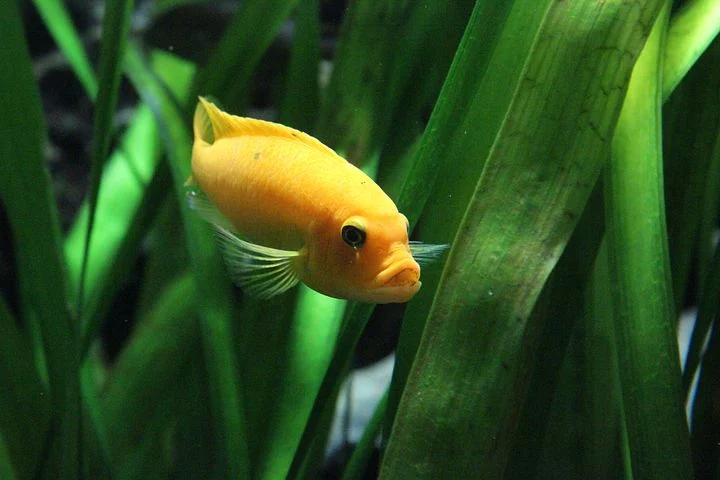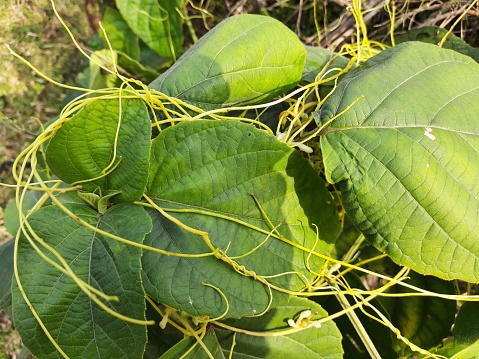
विज्ञान की शाखाएँ-जीवधारियों का नामकरण व वर्गीकरण || Branches of science- Classification of organisms
The branch of science in which detailed study of the origin, evolution, composition, activity, interaction of all organisms, their interaction and their effect on the environment, their death and other bio-processes etc. is done, 'Biology' is called. 'Aristotle' is the father of biology. He had studied biology extensively and established it as a branch of science. Firstly in 1801 AD, the use of the words 'Biology' and 'Treviranus' for the branch of the study of biologists under science. The scientists of Lamarck 'France' and Treviranus 'Germany' were. Biology can be classified into 2 branches- botany and zoology.
1. वनस्पति विज्ञान (Botany)- यह जीव विज्ञान की शाखा है जिसमें विभिन्न प्रकार की वनस्पतियों तथा पेड़ पौधों के अध्ययन को शामिल किया गया है। वनस्पति शास्त्री 'थियोफ्रेस्ट्स' वनस्पति विज्ञान के जनक हैं। इन्होंने 'हिस्टोरिका प्लेंटेरियम' नामक पुस्तक लिखी। इस पुस्तक में 500 प्रकार के पौधों का विस्तृत वर्णन किया गया है।
It is a branch of biology that encompasses the study of various types of plants and plants. Botanists are 'theofrests' botanists father of science. He wrote a book called 'Historica Plantarium'. A detailed description of 500 types of plants is given in this book.
पादप जगत की जानकारी के लिए नीचे दिये ब्लू कलर में दिये प्रकरण पर टच करें।
पादपों में प्रकाश संश्लेषण
2. प्राणी विज्ञान (life science)- जीव विज्ञान की इस शाखा के अंतर्गत प्रकृति के सभी जंतुओं और उनके क्रियाकलापों के अध्ययन को शामिल किया गया है। 'अरस्तू' जंतु विज्ञान के जनक कहे जाते हैं। इन्होंने 'हिस्टोरिका एनीमेलियम' नामक पुस्तक लिखी है। इसमें इन्होंने 500 जंतुओं का विस्तृत वर्णन किया है।br> This branch of biology covers the study of all animals of nature and their activities. 'Aristotle' is called the father of animal science. He has written a book called 'Historica Animeliam'. In this, he gave a detailed description of 500 animals.
जीवों के नामकरण (Nomenclature of organisms)- जीवों के नामकरण की पद्धति को 'द्विनाम पद्धति' कहा जाता है। इसे सर्वप्रथम सन 1753 ईस्वी में स्वीडिश वैज्ञानिक 'कैरोलस लीनियस' ने प्रस्तुत किया था। इस पद्धति में प्रत्येक जीवधारी का नाम लैटिन भाषा के 2 शब्दों से मिलकर बना है। पहले शब्द में जीवधारी के वंश का नाम और दूसरे शब्द में उसकी जाति का नाम रखा गया है। वंश और जाति के नामों के पश्चात वैज्ञानिक का नाम लिखा जाता है। यह वैज्ञानिक वही वर्गिकी-विद था, जो सर्वप्रथम उस जाति की खोज और उसे नाम प्रदान करता है।
उदाहरण- 'होमो सैपियंस लिन' मानव का वैज्ञानिक नाम है। वास्तव में होमो मानव का वंश है। सेपियंस उसकी जाती है तथा लिन वैज्ञानिक का नाम है। लीनियस का ही संक्षिप्त रूप लिन है। अतः स्पष्ट है कि लिनियस ने ही मानव जाति के जीवधारियों को सर्वप्रथम होमो सैपियंस कहा है।
The method of naming organisms is called 'bionic method'. It was first presented by the Swedish scientist 'Carolus Linnaeus' in 1753 AD. In this method, the name of each organism is made up of 2 words of Latin language. In the first word, the descent of the living being is named and in the second word the name of his caste is named. The name of the scientist is written after the names of the dynasty and caste. This scientist was the same classifier who first discovered and named the caste.
Example- 'Homo sapiens lin' is the scientific name of human. In fact homo is a descendant of humans sapiens is hers and lin is the name of the scientist. Linus is abbreviated to lin. Hence it is clear that Linnaeus has first called the living beings of mankind Homo sapiens.

जीव धारियों का वर्गीकरण (Classification of fauna)- सर्वप्रथम जीव धारियों के वर्गीकरण की नींव वैज्ञानिक 'जॉन रे' ने रखी। आगे चलकर जीव धारियों का वर्गीकरण वैज्ञानिक 'कैरोलस लीनियस' (1708 से 1778) ईस्वी ने किया था। ये स्वीडन के वैज्ञानिक थे। इनकी प्रमुख पुस्तकें सिस्टेमा नेचुरी, जेनेरा प्लांटेरम तथा क्लासेस प्लांटेरम हैं। इन पुस्तकों में उन्होंने जीव धारियों के वर्गीकरण का विस्तृत वर्णन किया है। सिस्टेमा नेचुरी के अनुसार, सभी जीव धारियों को 2 जगतों में वर्गीकृत किया गया है- पादप जगत और जंतु जगत। इसी वर्गीकरण के साथ जीवों के वर्गीकरण की पद्धति को आधार मिला और आधुनिक वर्गीकरण प्रणाली की शुरुआत हुई। अतः कैरोलस लीनियस 'वर्गिकी के जनक' कहे जाते हैं। सन् 1969 ईस्वी में वैज्ञानिक 'आर. एच. हट्टेकर' ने पाँच जगत प्रणाली को प्रस्तुत किया और इस प्रणाली ने द्वि जगत वर्गीकरण प्रणाली का स्थान ले लिया। इस प्रणाली के अनुसार प्रकृति के समस्त जीव धारियों को पाँच जगतों में विभाजित किया गया-
The foundation of the classification of animal stripes was first laid by the scientist 'John Ray'. Later the fauna was classified by the scientist 'Carolus Linnaeus' (1708 to 1778) AD. He was a scientist from Sweden. His major books are Sistema Naturi, Genera Plantarum and Classes Plantarum. In these books, he has given a detailed description of the classification of organisms. According to Sistema Naturi, all living stripes are classified into 2 worlds- plant world and animal world. With this classification, the system of classification of organisms got the basis and the modern classification system was introduced. Hence Carolus Linnaeus is called the 'father of class'. In 1969, the scientist 'R. H. Hattekar' introduced the five-world system and this system replaced the two-world classification system. According to this system, all the living beings of nature were divided into five worlds-
1. मोनेरा (Monera)
2. प्रोटिस्टा (Protista)
3. पादप (Plant)
4. कवक (Fungi)
5. एनिमेनिया (Anemia)
1. मोनेरा (Monera)- इस जगत में सभी प्रौकेरियोटिक जीव शामिल किए गए हैं। इसके अंतर्गत सायनोबैक्टीरिया जीवाणु और आर्कीबैक्टीरिया, तन्तुमय जीवाणु आदि आते हैं।
All prakerotic organisms have been included in this world. This includes cyanobacteria bacteria and archaibacteria, fibrous bacteria etc.
2. प्रोटिस्टा (Protista)- यह एक कोशिकीय जीव का जगत है। इस जगत के अंतर्गत जलीय यूकैरियोटिक जीव आते हैं। उदाहरण- यूग्लीना
It is the universe of a unicellular organism. This world includes aquatic eukaryotic organisms. Example- Euglina.
3. पादप (Plant)- इस जगत के अंतर्गत सभी प्रकार के रंगीन, प्रकाश संश्लेषण उत्पादक जीव, बहुकोशिकीय जीव आदि आते हैं। इसके अंतर्गत मॉस, शैवाल, पुष्पीय और अपुष्पीय बीजीय पौधों को शामिल किया गया है।
All types of colored, photosynthetic producing organisms, multicellular organisms etc. come under this world. This includes moss, algae, flowering and indigenous algebraic plants.
4. कवक (Fungi)- इस जगत में यूकैरियोटिक और परपोषित जीवधारी शामिल हैं। इन जीवों में अवशोषण द्वारा पोषण होता है। ये जीव इतरपोषी तथा परजीवी और मृतोपजीवी होते हैं। इन जीवों की कोशिका भित्ति काइटिन से निर्मित होती है।
The world consists of eukaryotic and fattened organisms. These organisms nourish by absorption. These organisms are heterotrophic and parasitic and carcinogen. The cell wall of these organisms is made up of chitin.
5. एनीमेलिया (Anemia)- इस जगत में सभी प्रकार की बहुकोशिकीय जंतु, समभोजी तथा यूकेरियोटिक और उपभोक्ता जीव शामिल हैं। इस जगत के 'मेटाजोआ' भी कहा जाता है। उदाहरण - जेलीफिश, हाइड्रा, सितारा मछली, कृमि, सरीसृप, पक्षी और स्तनधारी आदि। 'मनुष्य' भी इसी जगत का भाग है।
The world includes all types of multicellular animals, isotropic and eukaryotic and consumer organisms. Also known as 'metazoa' of this world. Examples- Jellyfish, Hydra, Starfish, Worms, Reptiles, Birds and Mammals etc. 'Man' is also a part of this world.
आशा है, इस लेख से आपको प्रतियोगिता परीक्षाओं की तैयारी में काफी मदद मिलेगी।
Hope this article helps you a lot in preparing for the competitive examinations.
धन्यवाद।
RF Temre
infosrf.com
संबंधित जानकारी नीचे देखें।
(Watch related information below) 👇🏻

आशा है, उपरोक्त जानकारी उपयोगी एवं महत्वपूर्ण होगी।
(I hope the above information will be useful and important. )
Thank you.
लेखक
(Writer)
infosrf.com








